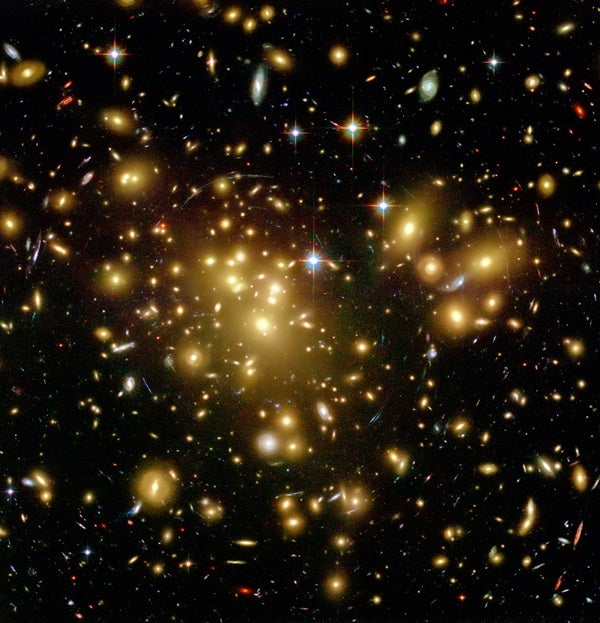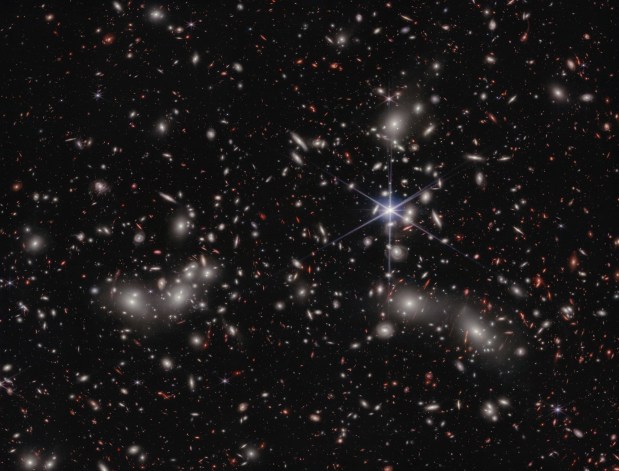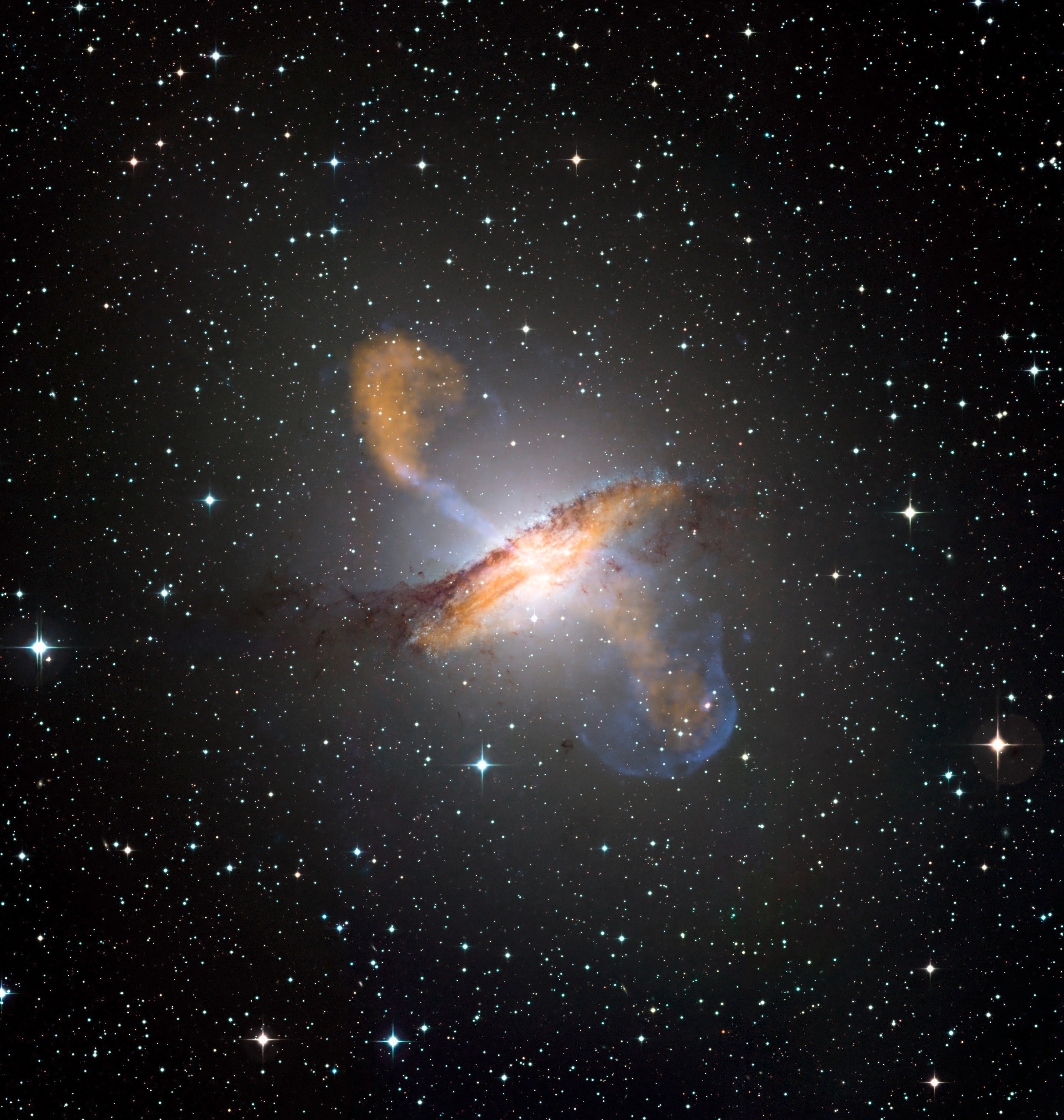What sort of stuff makes up our universe?
The question is a throwback to the ancient Greeks, who first came up with the notion that everything is composed of tiny atoms. Yet here we sit, still asking that question. When our telescopes survey the vast wall-less tracts of space and the galaxy clusters peppering the blackness, we observe their members as gravitationally bound together.
The problem we face is that each galaxy moves so fast that it should easily escape the gravitational clutches of the group it’s in. Galaxy clusters should have dissipated long ago, like crowds dispersing after a fireworks display. Groups of galaxies shouldn’t persist at all.
Swiss astronomer Fritz Zwicky noticed this way back in 1933 when examining nearby galaxy groups. He realized that some invisible glue is holding all of them together, and this adhesive became known as “dark matter.” Later, the way our galaxy rotates proved that this unseen gravitational epoxy is here as well. It lurks not merely between galaxies but within them.
To supply this much gravitational attraction, there’s got to be six to eight times more stuff in every galaxy — and among those star cities — than meets the eye. This enigmatic material can’t be more stars because we’d see them. It can’t be dark nebulae because those would influence the light of the stars, or else get heated up and start glowing. And they can’t be black holes because that would influence local motion.
If the 92 natural elements and all of the forms they assume are embedded within enormous quantities of unseen stuff, then our known universe of the Sun, Earth, and its tormented inhabitants are built of a minority substance in the cosmic census.
Everyone has a different guess what dark matter may be. The only thing we know for sure is that it exerts a gravitational attraction while neither emitting nor reflecting nor absorbing any light. Recent evidence indicates subatomic neutrinos may have a bit of mass, but even if so, there aren’t enough of them to explain all of this extra gravity. Maybe there are countless baseballs floating out there, or comet nuclei. Every idea has problems.
The leading candidate is an entirely new form of material unlike the normal baryonic matter that constitutes the visible universe. It would be something that passes through our bodies without any effect, the way neutrinos already do. We’d have already detected these dark matter particles if they influenced the visible world, so they must leave us alone — or else they are “weakly interactive.” They’d be subatomic particle sized, yet cannot be too lightweight or else they wouldn’t supply enough gravitational oomph. Whimsically, they’re often called WIMPS, for weakly interacting massive particles.
A helpful clue comes from analyzing other galaxies to see how their visible components are being yanked around. Doing so, we find a ratio of visible-to-dark-matter of about 1:8 in galaxies within our neighborhood. We’d expect this dark matter abundance to be consistent everywhere, and yet we find the ratio is only 1:4 in the colliding Antennae Galaxies (number 45 on our list). Conversely, astronomers recently found a nearby dwarf galaxy whose ratio is so incredibly high — an unbelievable 1:1,000 — that it’s essentially a dark matter galaxy.
The 2006 discovery was a fruit from the amazing Sloan Digital Sky Survey, which has in recent years doubled the number of known Milky Way dwarf companion galaxies from 12 to 24. One of them, named Segue 1, is 75,000 light-years away in the constellation Leo. Segue 1 is a billion times fainter than our galaxy.
Unlike most other galaxies, Segue 1 is not six or eight times more massive than it appears, but, to repeat, a thousand times more massive. Here is a galaxy that is essentially made of dark matter alone, with just several hundred stars thrown into the mix.
To put real numbers on it, Segue 1 weighs around 600,000 Suns, which is heavier than globular clusters. And its stars resemble not those in clusters but rather galaxies — not to mention that, at 400 light-years wide, it’s more than twice the dimension of globulars. Segue 1 is a dwarf spheroidal galaxy. And yet its light is off-the-chart faint, coming from a paltry number of stars. These are not whirling violently around some massive object in its core, so there cannot be a central supermassive black hole to explain Segue 1’s heft.
To sum up, here we have a galaxy with a mass of more than a half-million Suns, but emitting the light of just 300 Suns. It has no significant hydrogen gas, no dust blocking anything, no central black hole. Where is all its weight and gravity coming from? To paraphrase famous detective Sherlock Holmes, when you eliminate all other explanations, whatever is left, no matter how unlikely, must be the answer.
Thus, Segue 1 is the first and only dark matter galaxy in the universe.










